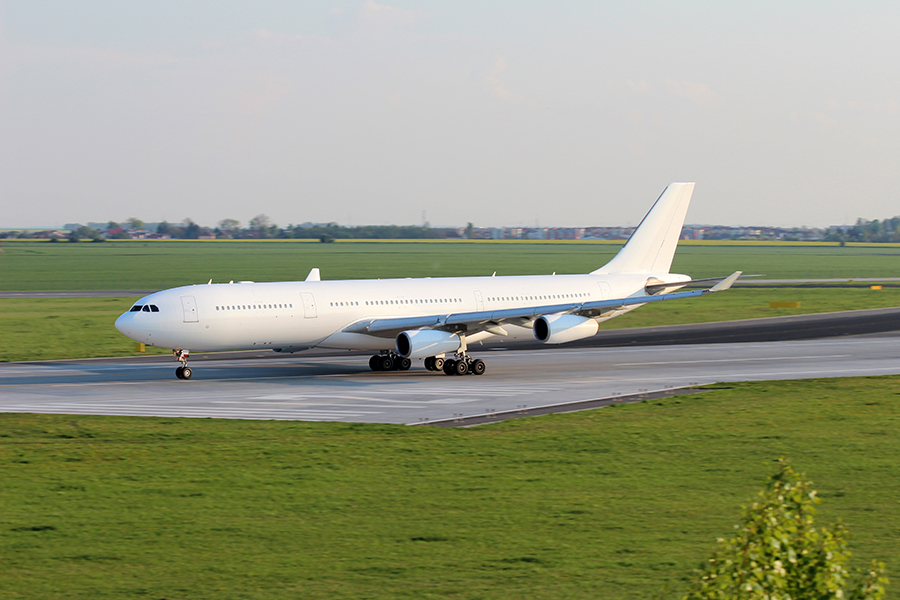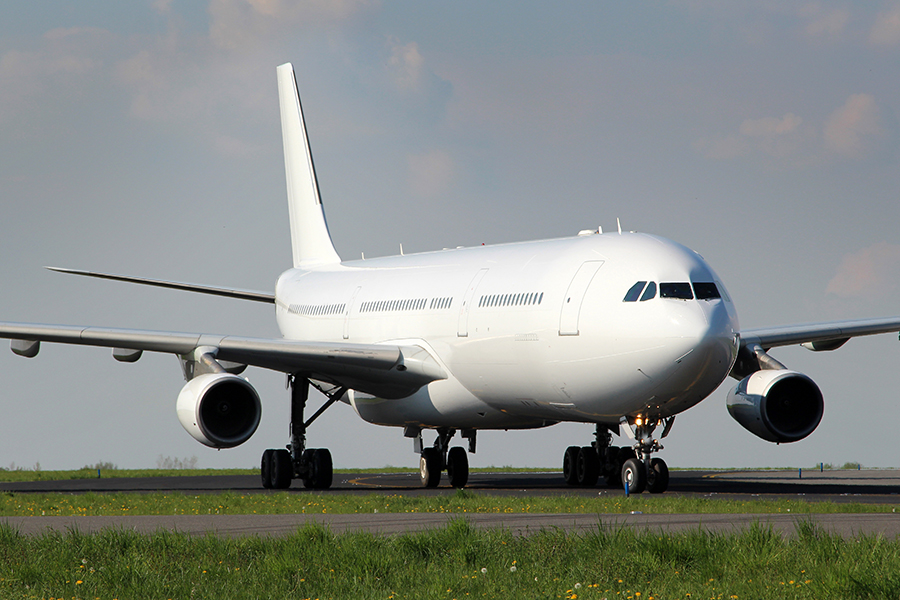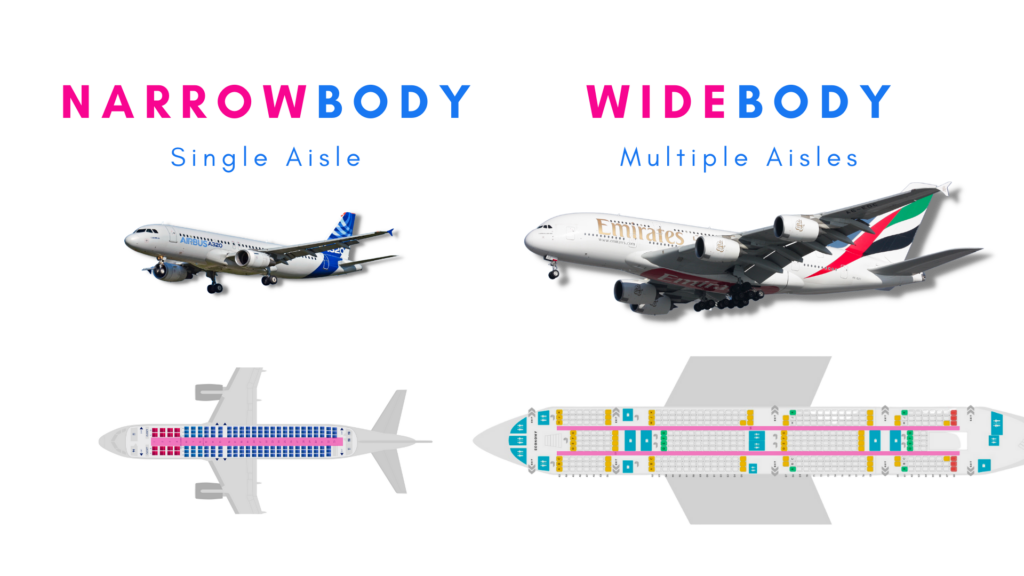Have you ever been in one of those situations where someone drops specialized jargon like “narrowbody” or “widebody?” You feel totally lost, but because they said it with such confidence, you feel like you would sound stupid to ask for the definition.
It’s okay. That happens.
Take a deep breath and confidently say, “Hey, I’m new to this aviation thing. Do you mind explaining what ‘narrowbody’ and ‘widebody’ mean?”
To sum it up, a narrowbody aircraft has a single aisle to walk down. Inversely, a widebody aircraft has two or more aisles.
The cool thing is that only a real jerk will gatekeep information like that from you, so you’re probably safe to ask. Additionally, it’s a term that’s pretty popular with travelers as well as aviators.
In all seriousness, you’re not expected to know everything about aviation as soon as you start getting into it. It’s one of the most constantly evolving and technical fields out there, so keeping up is very difficult.
Even the FAA has difficulties. They print a book called the Aeronautical Information Manual (AIM) containing acronyms – every single year.
There are also multiple documents posted almost daily to keep aviators, pilots, mechanics, and air traffic controllers up to date with all the latest information.
And that’s not even taking into account the constant weather updates and the technological updates that go into that field as well.
So, it’s pretty common to ask questions and not know things. Aviation is vast, and it’s almost impossible to know all facets of the industry.
Now, let’s reel it back in and focus on the question at hand. You know the basic definition of a widebody vs. narrowbody aircraft:
- Narrowbody: one aisle
- Widebody: two or more aisles
There’s more to it than that, though; let’s take a deeper look.
Narrowbody Aircraft

Narrowbody aircraft are the more widely sold of the two and have a much longer history. This all stems from the fact that they came first. The power provided by the development of jet engines helped develop bigger widebody aircraft.
Interestingly, although widebody aircraft are more complex, they are also less popular. The majority of passenger jets are narrowbody aircraft.
The two dominating brands are Boeing and Airbus. Boeing set the standard with the invention of the 737, which was first introduced in 1967 (only nine years after the FAA was officially created!).
What Boeing did well, Airbus expanded on when they introduced the A320 in the market in 1988. While Boeing had over a 20-year head start, the A320 is quickly catching up to the total sales of the 737.
Narrowbody aircraft make up the majority of aircraft flying today, except for the myriad of general aviation aircraft.
“General aviation” is the term used for smaller aircraft that aren’t used for commercial air travel. This likely includes the kinds of airplanes your cool uncle flies for fun.
So, why are narrowbodies more popular?
Simple; they fill a bigger market.
There are more narrowbodies that can handle short and medium-haul flights, which make up the bulk of air travel these days.
Widebody Aircraft

While narrowbodies are more popular, widebodies are iconic.
None are more iconic than the Queen of the Skies, the Boeing 747.
Not long after the 737 entered the market, Boeing decided they could make a bigger 737 by doubling the number of engines. That’s how the idea for the 747, the four under-engine wings that everyone recognizes, began.
Since it was on a bigger platform, Boeing did some research to see if it would be much better to have multiple aisles and spread the rows out a bit more. This is the defining feature of the widebody aircraft that we know and love.
Boeing didn’t stop there though.
They also added the incredibly memorable front hump on the airplane to make it a double-decker. Everything about this aircraft was revolutionary for the entirety of the aviation industry.
The 747 is probably the most recognized airplane in the world, but it’s not the biggest. Airbus did the same thing they did with the A320 series airplanes and created the A340 (and later the A380) to set a new standard for widebody airplanes.
Where the 747 had the double-decker hump on the front of the fuselage, Airbus took it a step further. Airbus made the entire fuselage of the A380 a double-decker widebody airplane.
Airbus created the biggest commercial airplane in service when the A380 was first introduced to the airline market in 2007. This behemoth typically carries a whopping 555 passengers (with a maximum of 853!); whereas the 747 typically carries between 416 and 524 passengers.
Why Not Widebody All the Time?

These massive machines might make you wonder, why don’t all airlines just fly the biggest airplanes? Wouldn’t it make more sense to carry the most amount of people per flight?
Quite frankly, that is exactly the goal of all airlines. They all want to make the most money per seat sold. If they didn’t, they couldn’t grow their service and add more routes.
The thing is, there are a ton of other considerations that must be made. For starters, not all airports can accommodate larger aircraft. If today’s widebody super jumbo jets tried to land on the shorter runways of LaGuardia, then it would run right off almost every time.
On top of that, the noise from the engines.
Bigger engines are louder. People living near airports don’t want it to be that much louder. It not only disturbs people, but wildlife near airports. Birds existed before airplanes, so it’s only right to try and share the skies appropriately…
Finally, the cost per mile.
Not only do big engines make lots of noise, but they also use lots of fuel. Even with modern engines and improved fuel efficiency, an A380 will take more fuel to fly the same distance as an A320. It’s the same reason it’s smarter for a family to have a more fuel-efficient crossover car than a big bus.
Conclusion
Don’t worry though, even though the COVID-19 pandemic slowed down travel, it didn’t stop it. People want to get out more than ever.
That means the technology of aircraft will continue to grow. Who knows, maybe in a few years we will see the return of supersonic air travel!



